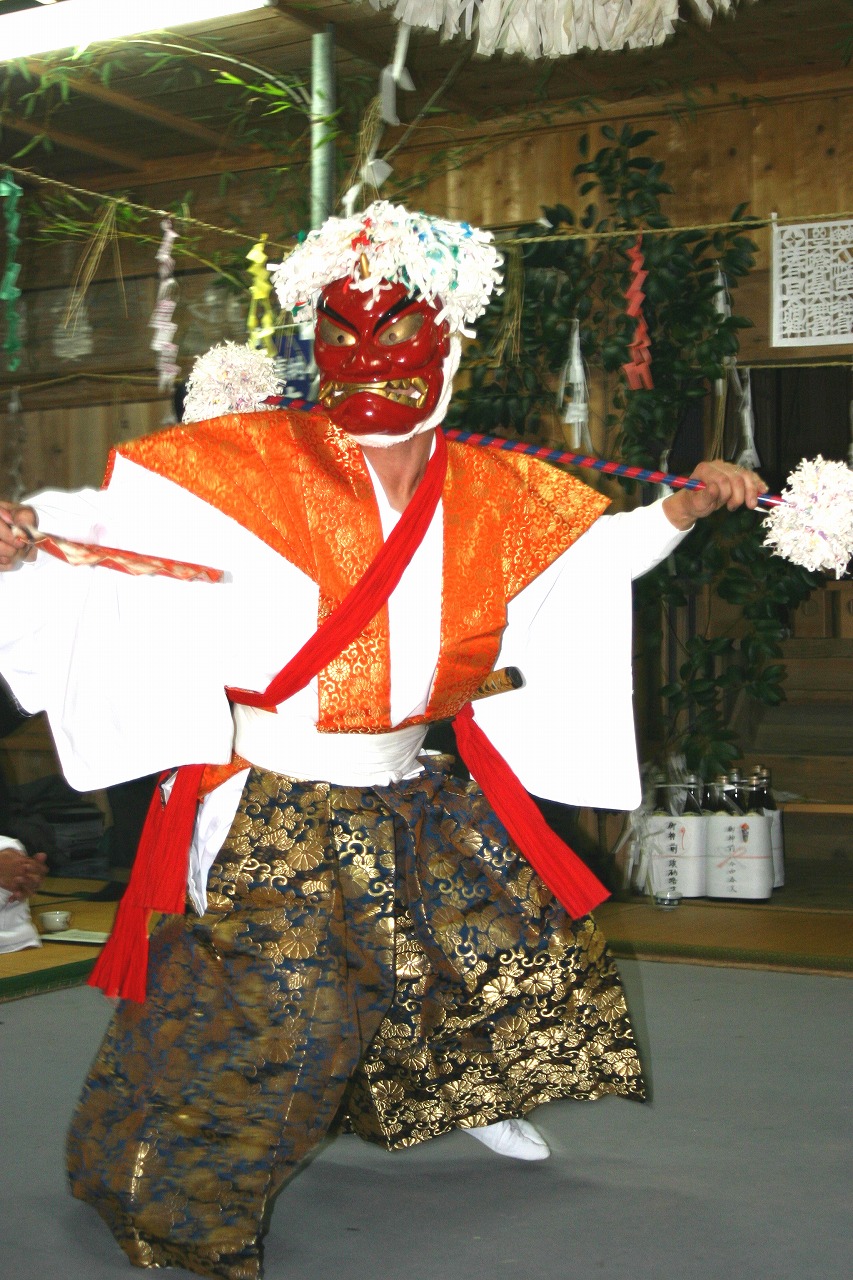椎葉神楽 について
Night kagura takes place every year from November to December. It is handed down in 26 districts in the village, with all villagers in each district performing the kagura together. Dancing Kagura is a winter festival for the villagers of Shiiba, and is also known as the Toshi Festival. The place where kagura is performed is originally a private house, which is called a kagura inn. The dance hall is called Mikouya, and the dancers are called Houriko. The number of performances is often said to be 33, but this is not always the case and varies from nearly 40 to more than 20. One distinctive feature is that it strongly conveys the elements of hunting and slash-and-burn farming that are still practised in the village. There are dedications to wild boar and deer, and many kagura performances that use millet, soya beans and other cereals. The chanting called Shogyo is also very important, recounting the origins of kagura and torimono (tools used in the dance, such as gohei (staff) and bows and arrows). These chants include songs sung in the Heian period (794-1185). When villagers make a wish to be cured of an illness and their wish is fulfilled, they erect a decoration in the garden of the inn, called a shimen of great treasure. This is known as the 'Shuren no Daisai' (Great Festival of the Shovels), where large scale decorations and a special kagura dance performed on this occasion can be seen. Nowadays, there is less wish-fulfilment, so for the sake of preservation, Tsugao and Okochi hold a grand festival once every four years, while Takenoedao and Junegawa hold a grand festival every year. The performances vary from district to district, and the rhythms of the taiko drums and the costumes of the celebrants are all very different, even within the same village.



